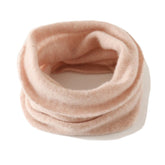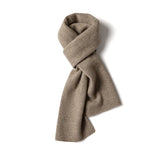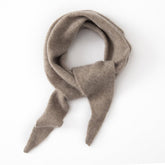Can You Steam Silk?
Can You Steam Silk?
Yes! You can steam silk, and it’s one of the best ways to remove wrinkles without damaging the fabric.
Silk is delicate, so using an iron can be risky. Steaming, on the other hand, gently relaxes the fibers with moisture, smoothing out creases while keeping the fabric soft and strong.
To do it right, use a steamer made for delicate fabrics and follow proper techniques to avoid shrinkage or discoloration. With the right care, your silk garments will stay beautiful and wrinkle-free!
Here's our in-depth guide on the best way to steam silk, how to use a steamer, and more.
Key Takeaways
- You should steam silk to smooth out wrinkles, freshen your silk goods, remove bacteria and unwanted smells, and protect your garments.
- To prepare to steam your silk, choose a steamer designed for delicate fabrics, check your care label, hang it or lay it flat on an ironing board, and use distilled water.
- To steam silk, fill the water reservoir, heat the steamer, test on a small area, steam with downward strokes, and allow drying time.
- It's always better to steam rather than iron your silk.
Why Should You Steam Silk?


Now that you know you can steam silk dresses and other garments, let's talk about all the reasons you should:
- Smooth Wrinkles: The heat and moisture from steam naturally smooth out wrinkles and creases. This makes garments, including your fancy new silk scarf, look fresh and polished.
- Freshen Garments: Since silk is usually taken to a professional dry cleaner instead of washed in a washing machine with detergent, steaming can help refresh the fabric between cleanings. It adds moisture back into the fibers, keeping them in their pristine, natural state.
- Remove Bacteria and Odors: Steaming doesn't just remove wrinkles, it also kills bacteria and gets rid of odors. This makes it a great way to maintain hygiene in your chic garments, like your favorite silk blouse!
- Protect Your Garments: Using a steamer reduces the risk of damage compared to traditional ironing methods. Steaming is the best method because there is no direct contact with the fabric.
How to Prepare to Steam Silk?
Before you start steaming your silk garments, you need to prepare properly:
- Choose the Right Steamer: Select a steamer that has adjustable steam levels, deliberately designed for delicate fabrics. Look for features like a wide steam head and a non-stick soleplate.
- Check Care Labels: Always check the care labels on your silk garments. Some types of silk may not be suitable for steaming.
- Hang or Lay Flat: Prepare your garment by hanging it on a padded or sturdy hanger or laying it flat on top of an ironing board.
- Use Distilled Water: Only use cold water that is distilled and fill the steamer's water tank. This prevents mineral buildup that could leave water spots on your fabric, and you definitely don't want that!
How to Steam Silk?


Here's how to steam your silk the easy way! Let's get started with some basic steps to follow:
- Fill the Water Reservoir: Use distilled water and avoid overfilling the tank to prevent water drops from staining your garments.
- Heat the Steamer: Turn on your steamer and wait for it to heat up (usually 30 to 90 seconds) until steam begins to flow steadily.
- Test on a Hidden Area: Before steaming visible areas, test on an unnoticeable area of the garment to make sure that there aren't any bad reactions when you move the steamer around.
- Steam with Downward Strokes: Hold the steamer 6 to 8 inches (about 15 to 20 cm) away from the fabric and move it continuously in downward strokes. This allows steam to penetrate without saturating any one area. Don't keep your steamer in one place for too long!
- Allow Drying Time: After steaming each section, allow it to air-dry until it's cool and dry before moving on to the next areas.
Advanced Steaming Techniques for Silk
If you want to learn a few advanced steaming techniques, this is the place for you!
Try using a bamboo steamer, especially for larger pieces like scarves or when dye-setting is needed. Arrange your silk items carefully in layers within the bamboo steamer, and ensure they do not touch each other.
What are the Risks of Steaming Silk?
While steaming is generally safe for silk, cotton, wool, satin, and a variety of other materials, there are some risks involved:
- Shrinkage: Too much moisture exposure can cause silk fibers to shrink up to 4%. To minimize this risk, limit your steam exposure time and keep a light grip on the fabric while steaming your fresh laundry.
- Water Spots: Using tap water can lead to mineral deposits that leave spots on your garments. Always use distilled water.
- Discoloration: High heat or too much heat exposure can lead to fading or losing the color of your dyed fabrics.
Steaming vs. Ironing: What’s Best for Silk?
Steaming is the better choice for silk. It uses moist heat to relax fabric fibers, removing wrinkles without touching the fabric. This prevents damage like scorching. Plus, steam freshens up silk by eliminating odors and bacteria.
Ironing, on the other hand, gives a crisp look with sharp creases, but it’s risky for silk. The high heat can easily scorch or weaken the delicate fibers, especially without a protective layer between the iron and fabric. It also requires careful setup to avoid water spots.
For a safe and easy way to keep your silk looking great, go with steaming. If you're unsure, professional dry cleaning is always a good backup!
Slipintosoft: Elegant Silk clothing
Steaming is truly the best way to go. You can lower the risks of scorching and get your silk goods looking fresh in 5 minutes.
Whether you own a stunning silk dress or a delicate scarf, using a steamer will help protect your treasured fabrics from damage caused by traditional ironing methods. If you're interested in adding more high-quality silk garments to your closet, check out the Slipintosoft online store and browse our collection. We even have silk gifts for under $100 if you're on a budget!
FAQs on Can You Steam Silk?
What fabrics should not be steamed?
Fabrics like nylon and polyester should not be steamed. This is because high heat can damage them. Fragile fabrics like lace and sequins can also be harmed by steam.
Can you blow dry wrinkles out of silk?
Yes, you can use a blow-dryer or hairdryer to help remove wrinkles from silk, but it's important to use a low-heat setting. Hold the dryer at a distance and gently smooth the fabric with your hand while blowing warm air to avoid damage.
Can you put silk in the dryer to get wrinkles out?
No, you should not put silk in the dryer to remove wrinkles, as the heat can damage the fabric. Instead, use a steamer or iron on a low setting with a thin press cloth to protect it.
Back to Top: Can You Steam Silk?










